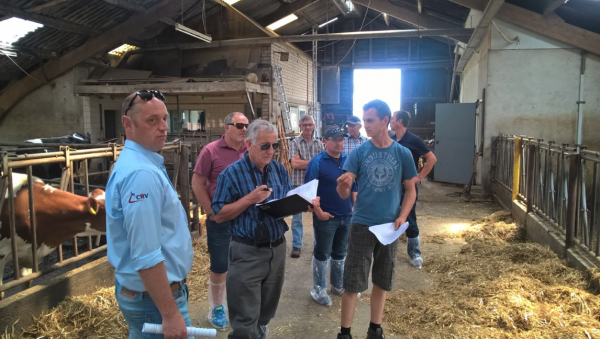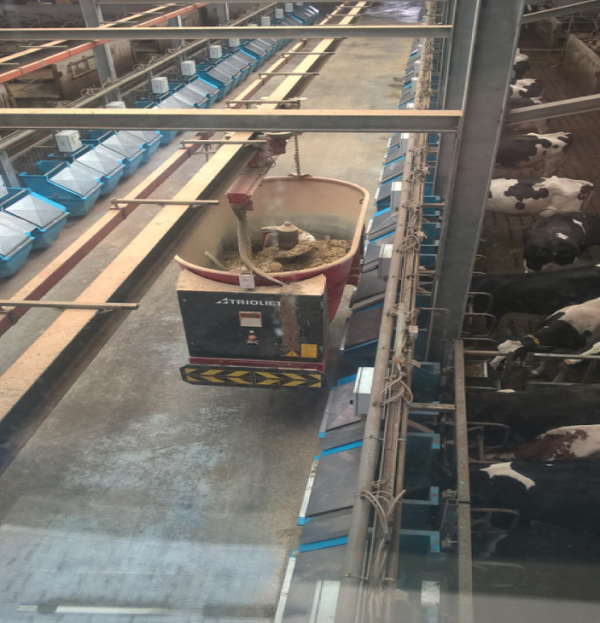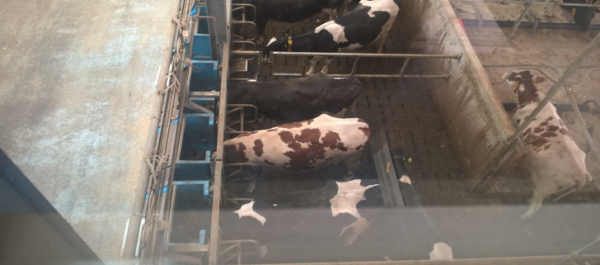Dairy Farming In The Netherlands Part 2
Following on from part 1 of the Dairy Barn System's team trip to the Netherlands, we dive deeper into Dutch dairy farming and what the team learnt whilst in Europe. Following are the various dairy farms the team visited in Deventer and an overview of their facilities and operations:
AVER HEINO FARM
Henk runs a successful pharmaceutical company employing 600 people with branches in many countries and his products are sold here in New Zealand. His farm is an organic A2 dairy farm which he bought from the University of Wageningen. The original 38 Ha cost him 3,000,000 euros. Henk is hoping to market A2 milk into the Netherlands.
- The farm runs 115 Fleckvieh cows on a total of 86 HA
- They produce 950,000 litres of milk and get 52 euro cents/ litre (88c NZD)
- Winter milk earns 47 euros while organic milk earns 62 euro cents/litre (1.05 NZD)
- The cows produce an average of 27 Ltr/cow/day doing 2.6 milkings/24 hr through 2 robotic milking machines
- The cows averageliveweightof 700-800kgs
- From May onwards they are outside 7.5 hours/day
- They need enough effluent storage from 1st Sept to 15th Feb
- Bull calves are sold into the veal market
- The farm is run by two full-time and two part-time staff

Henk Aa's Dairy Barn
NILLESEN FARM
- This farm is open to the public and boasts mini golf and meeting facilities with over visitors 10,000 per year
- 80 Ha with 150 cows total with 135 being milked through three Lely robots.
- Cow production averages 870 kgs ms/cow with averagecowliveweightof625kgs
- The average age of the cows was 4 years old
- The annual rainfall of 1600-1700mm and up to 5 days of snow per year
- They generate solar energy with surplus sold back to the grid for 10-euro cents/kW
- Compost bedding is used intheirfreestallbarnwith the beds topped up twice weekly

Nillesen's Solar Panel Reader Solar Panels

Effluent injecting Equipment
JANSSEN FARM
- The farm was destroyed in World War II
- 75 Hectare farm with a 27 Hectare milking platform with 115 cows
- Two Lely robotic milkers
- Cows produce 10,500Ltrs milk and 800 Kgs ms in a 305 day lactation
- Cows average a 6 year milking life
- Typical slatted floor barn with holding tanks underneath plus an outside storage tank
- Average SCC 100k but currently a very low 49k
- Farm produces 1.2 million litres of milk annually

VAN ECK FARM
- Bought the 53 Ha farm in 1978
- Milks 105 cows through two A4 Lely robots which cost 120,000 Euros each ($203,000)
- Cows last 4-5 lactations
- 2.9-3 milkings per 24 hour period
- 10 Ha corn silage is grown

van Eck Farm and Effluent Pusher
DRONTEN UNIVERSITY FARM
- 340-hectare farm attached to the Dronten University teaching pig, poultry, equine and dairying
- Of the 1600 students 200 study dairying
- The farm was under water until it was reclaimed by dykes in 1967
- The dairy farm has a 16 bail herringbone, milking 60 cows and a Delaval robot milker which milks 50 cows
- Cows produce 700-800kg ms at a stocking rate of 2 cows per hectare
- They receive an 18 euro cent premium for producing organic milk
- They have recently built an open plan barn with a chip floor
- Windmills are a feature of the farm which generates lease revenue for the landowner
WAGENINGEN UNIVERSITY & RESEARCH CENTRE
- Considered one of the top agricultural study centres in the world
- Cows spend 5 months indoors from November-March
- 550 cows, 490 cows milked through a 40 bail rotary shed and 60 cows through a Delaval robot milker
- 160k SCC
- Average barn cow liveweight is 600-700kg
- Paddock cows 50kg lighter
- Barn labour needs to be high competence to handle the data collection for the research it carries out
- They're conducting dairy cow emissions research in a sealed shed equipped with monitors
- The cows receive 6kg of concentrates at milking
- Some barn cows are collared and allocated a specific feed bin per two cows
- All feed put into and eaten out of the bin, is weighed
- All the feed is prepared automatically and put in the bins by an automatic feed wagon
- The cows take one day to learn which bin contains the ration allocated to her
Wageningen University & Research Centre
- Considered one of the top agricultural study centres in the world
- Cows spend 5 months indoors from November-March
- 550 cows, 490 cows milked through a 40 bail rotary shed and 60 cows through a Delaval robot milker
- 160k SCC
- Average barn cow liveweight is 600-700kg
- Paddock cows 50kg lighter
- Barn labour needs to be high competence to handle the data collection for the research it carries out
- They are doing dairy cow emissions research in a sealed shed equipped with monitors
- The cows receive 6kg of concentrates at milking
- Some barn cows are collared and allocated a specific feed bin per two cows
- All feed put into and eaten out of the bin, is weighed
- All the feed is prepared automatically and put in the bins by an automatic feed wagon
- The cows take one day to learn which bin contains the ration allocated to her

Automated Feed Wagon

Cows Feeding

Wageningen University Rotary Dairy Shed
Â
